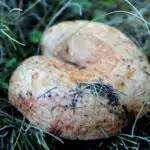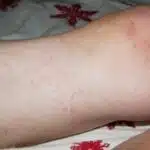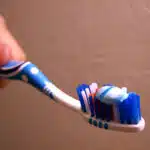Rust stains on clothes and carpets are a common sight in many homes. These stubborn stains can be caused by various factors, including exposure to iron-rich water or metal objects. Removing rust stains from clothing or carpet can be a challenging task, especially if the stain has set in for an extended period. While there are several commercial rust stain removal products available on the market, they may contain harsh chemicals that can damage fabrics or leave behind residue. In this article, we will discuss effective methods of removing rust stains from clothes and carpets using natural ingredients that are safe and eco-friendly.
As a rust stain removal expert, I have encountered numerous cases where homeowners have struggled to remove unsightly rust stains from their clothing and carpets. Rust stains not only ruin the appearance of your garments and carpet but can also cause permanent damage if left untreated. It is essential to understand the causes of rust stains and how to prevent them to avoid further damage. Using our tried-and-tested natural remedies, you can effectively remove even the most stubborn rust stains without causing any harm to your fabrics or the environment. With these simple solutions at hand, you can restore your clothing and carpets back to their original condition and enjoy clean, fresh-looking surfaces once again.
What Causes Rust Stains On Clothes And Carpets?
Rust stains on clothes and carpets can be frustrating to deal with, especially if they are hard to get rid of. Understanding the causes of rust stains is important in preventing them from happening in the first place. Rust is formed when iron or steel comes into contact with water or oxygen, causing a chemical reaction known as oxidation. This process leads to the formation of reddish-brown flakes on metal surfaces, which can transfer onto other materials.
One of the main causes of rust stains on metal surfaces is exposure to moisture and air. When metal objects are left exposed to the elements for extended periods, they can develop rust stains that may eventually spread onto surrounding items. Rust stains may also be caused by contact with acidic substances or chemicals that react with metal surfaces.
To prevent rust stains on household items such as clothing and carpets, it’s essential to keep metal objects dry and avoid exposing them to moisture for long periods. You should also store metal objects away from acidic substances like vinegar or lemon juice, which can cause corrosion and lead to rust formation. Regular cleaning and maintenance of metal surfaces can help prevent the buildup of rust over time.
Understanding the chemistry of rust is crucial in effectively removing rust stains from clothes and carpets. By knowing how rust forms and what causes it, you can take steps to prevent its formation in your home. In the next section, we’ll delve deeper into the science behind rust formation and explore effective ways of removing stubborn rust stains from various surfaces.
Understanding The Chemistry Of Rust
Understanding the Chemistry of Rust is an essential step in effectively removing rust stains from clothes and carpets. Rust is formed when iron, oxygen, and water come into contact with each other, causing a chemical reaction that leads to the formation of ferric oxide. This process is accelerated in moist or humid conditions, leading to faster rust formation.
Rust prevention techniques are essential in avoiding rust stains on clothes and carpets. Regular cleaning of metal objects such as garden tools or bikes can help prevent rust formation. Additionally, storing metal objects in dry areas and using rust inhibitors can also be effective measures for preventing rust formation.
When it comes to removing rust stains from clothes or carpets, there are various rust removal products available on the market that can be used effectively. These products contain strong acids that work by breaking down the chemical bonds that hold the stain together. It is important to follow safety precautions when using these products, as they can be harmful if not handled properly.
Acting quickly is crucial when dealing with rust stains on clothes or carpets. The longer the stain remains untreated, the more challenging it becomes to remove it completely. Therefore, it is advisable to take immediate action by blotting up as much of the stain as possible before applying any cleaning solutions or products. By following these tips and techniques for preventing and removing rust stains, you can maintain a clean and spotless environment for your clothes and carpets. In the next section, we will discuss further why acting quickly is critical in addressing rust stains on clothes and carpets.
The Importance Of Acting Quickly
When dealing with rust stains on clothes or carpets, time is of the essence. The longer you wait to address the stain, the harder it becomes to remove. It is crucial to act quickly and efficiently in order to prevent the stain from setting in permanently. This cannot be overstated enough: taking quick action is paramount when it comes to removing rust stains.
To ensure that you’re able to remove rust stains as quickly as possible, there are a few tips worth keeping in mind. Firstly, it’s important to understand that different materials require different removal techniques. For example, removing rust from clothing requires a different approach than removing rust from carpets. Secondly, having an arsenal of cleaning supplies at your disposal can make all the difference when it comes to effectively treating rust stains. Lastly, knowing what not to do is just as important as knowing what actions should be taken – using bleach or other harsh chemicals could end up causing more harm than good.
When it comes down to it, acting quickly and confidently is key when trying to remove rust stains from clothes or carpets. The importance of taking immediate action cannot be stressed enough – by following these tips for removing rust stains quickly and effectively, you’ll have a much better chance of successfully eliminating the stain before it becomes too stubborn. With that being said, the next step in the process involves assessing just how severe the stain really is – read on for more information!
Assessing The Severity Of The Stain
Before attempting to remove rust stains from clothes or carpets, it’s important to assess the severity of the stain. This will help determine the appropriate course of action and prevent any further damage. One way to do this is by examining the color and age of the stain. If the rust stain is dark in color and has been present for a long time, it may be more difficult to remove than a light-colored, fresh stain.
Another factor to consider is colorfastness testing. Some fabrics and carpets may not be able to withstand certain cleaning methods or solutions, leading to discoloration or damage. It’s important to test a small, inconspicuous area before treating the entire stained area. This can be done by applying a small amount of cleaning solution on a hidden area and checking for any adverse reactions such as discoloration or fading.
Assessing the severity of a rust stain is crucial in determining how best to proceed with its removal. By taking into consideration factors such as color and age of the stain, as well as performing colorfastness testing beforehand, individuals can avoid causing further damage while ensuring successful removal of the rust stain. Now that we have assessed the severity of the stain, let us move on to pre-treatment: removing excess rust.
Pre-Treatment: Removing Excess Rust
Scraping off excess rust can be done using a blunt knife or a wire brush, but it is important to use caution and avoid damaging the fabric or surface.
For more stubborn rust stains, a rust-removal product can be used to break down the bond between the rust and the fabric.
Soaking the affected area for a few hours in a rust removal solution can help loosen the rust and make it easier to remove.
Be sure to rinse the affected area thoroughly and dry it before applying rust removal products.
It is important to follow the instructions on the product label carefully to ensure proper use and safety.
For best results, it is recommended to repeat the process several times to ensure all rust is removed.
Scraping Off Excess Rust
Rust stains on clothes or carpets can be an unsightly sight, causing frustration and anxiety for those who experience it. However, it is important to approach the problem with a clear head and the right tools to ensure successful removal. In this article, we will discuss the pre-treatment phase of removing excess rust from fabric surfaces using rust removers while avoiding fabric damage.
The first step in pre-treating rust stains is to scrape off any excess rust. This is essential as it helps prevent the rust from spreading or penetrating deeper into the fabric. Using a blunt object like a spoon or a butter knife, gently lift off as much rust as possible without damaging the fabric fibers. Be careful not to apply too much pressure as this can cause tears or holes in delicate fabrics. Once you have removed as much rust as possible, move on to the next step of pre-treatment.
Scraping off excess rust is just one part of the pre-treatment phase for removing rust stains from clothes or carpets. It is important to note that not all fabrics are created equal and some may require special care when handling rusty stains. For instance, delicate fabrics like silk, wool and cashmere require gentle handling so as not to damage their fibers while removing excess rust. To avoid fabric damage when scraping off excess rust, use a light hand and work slowly until all visible signs of rust have been eliminated before moving on to other treatment options such as applying a specialized stain remover solution.
In conclusion, removing excess rust from clothes or carpets requires patience, attention to detail and the right tools for successful removal. Scraping off excess rust using appropriate methods helps prevent further damage to your precious garments and ensures they remain in pristine condition after treatment with specialized stain removers. Remember always to take extra caution when dealing with delicate fabrics by working slowly and carefully during every stage of stain removal process.
Applying A Rust-Removal Product
After successfully scraping off excess rust from fabric surfaces, the next step in pre-treating rust stains is to apply a specialized rust-removal product. There are many types of rust removers on the market today, and it’s important to choose one that is safe for your specific fabric type. Some popular options include products containing oxalic acid or phosphoric acid, as well as commercial rust converters.
When applying a rust-removal product, it’s important to follow the manufacturer’s instructions carefully. This may involve diluting the solution with water or using protective coatings to prevent further damage to the fabric. It’s also essential to test a small, inconspicuous area of the garment first before treating the entire stain. This will ensure that the product doesn’t cause discoloration or other damage to your fabric.
In addition to applying a specialized rust remover, you may also want to consider using protective coatings on your clothing or carpets to prevent future rust stains from occurring. This could include treating fabrics with waterproofing sprays or using special covers when storing metal objects near textiles. By taking these steps and being proactive about preventing future stains, you can keep your clothing and home looking beautiful for years to come.
Soaking The Affected Area
As a rust stain removal expert, it is essential to understand that pre-treating rust stains involves various steps. One of the most critical steps in the process is soaking the affected area. Soaking is an effective technique for removing stubborn rust stains on fabrics and carpets. It helps to break down the rust particles and loosen them from the fibers, making it easier to remove.
When using a soak solution, it’s important to consider time management for rust stain removal. The duration of soaking will depend on several factors such as the severity of the stain, fabric type, and manufacturer’s instructions. Leaving the fabric to soak for too long may cause discoloration or damage to delicate fabrics. On the other hand, insufficient soaking time may not remove all traces of rust entirely.
Effective soaking techniques involve immersing the entire affected area in a solution of water and a suitable rust remover product for a specified amount of time. The mixture should be agitated occasionally to ensure that all parts of the fabric are exposed evenly. Afterward, rinse off with clean water and inspect whether there are any remaining stains before proceeding with further treatment methods such as washing or dry cleaning. By following these guidelines and being patient while treating your stain, you can achieve excellent results without damaging your fabric or carpet.
Natural Remedies For Rust Stain Removal
Have you ever been frustrated by rust stains on your clothes or carpet? It’s a common problem that can be difficult to remove, but fear not! There are natural remedies available that can effectively remove these stubborn stains. As a rust stain removal expert, I’ve seen it all and have tested numerous DIY methods to find the most effective solutions.
Natural vs. Chemical Solutions: When it comes to removing rust stains, there are two main options – natural or chemical solutions. While chemical solutions may seem like the quickest and easiest option, they often contain harsh chemicals that can be harmful to both your health and the environment. Natural remedies, on the other hand, are safer and more environmentally friendly while still being just as effective.
Effectiveness of DIY Methods: Many people turn to DIY methods for rust stain removal before resorting to professional cleaning services. While some of these methods can be effective, it’s important to note that not all DIY solutions are created equal. Some may work better than others depending on the severity of the stain and the type of fabric or surface it’s on.
- Here are four natural remedies for rust stain removal that have been proven to work:
- Lemon juice and salt
- White vinegar
- Baking soda paste
- Hydrogen peroxide
With so many options available, it can be overwhelming trying to decide which method is best for you. In the next section, we’ll dive deeper into one of the most popular DIY methods – the vinegar and baking soda method – and provide step-by-step instructions on how to use it effectively. Trust me when I say that with a little bit of patience and elbow grease, those pesky rust stains will be a thing of the past in no time!
Vinegar And Baking Soda Method
Moving on from natural remedies, there are several cleaning solutions available in the market that can effectively remove rust stains from clothes and carpets. These products contain powerful chemicals that break down the rust particles, making it easier to wash out. However, it is important to follow the manufacturer’s instructions and use appropriate safety measures when handling these products.
For those who prefer DIY alternatives, the vinegar and baking soda method is a popular choice. Vinegar contains acetic acid which can dissolve rust while baking soda acts as a gentle abrasive to scrub away the stain. Simply mix equal parts of white vinegar and water, apply it onto the affected area and let it sit for a few minutes before sprinkling baking soda on top. Scrub gently with a brush until the stain fades away before washing as usual.
Another effective DIY option is using lemon juice and salt. Lemon juice contains citric acid which can help break down rust stains while salt acts as an abrasive agent. Squeeze fresh lemon juice onto the stain and sprinkle some table salt over it. Let it sit for a few hours or overnight before scrubbing with a brush and washing as usual.
Transition into subsequent section: While vinegar and baking soda works well for most rust stains, some may require a more potent solution. In this next section, we will discuss the lemon juice and salt method in more detail – another powerful DIY alternative that can effectively remove stubborn rust stains from clothes and carpets.
Lemon Juice And Salt Method
The lemon juice and salt method is an effective way of removing rust stains from clothes and carpets. The citric acid in the lemon juice reacts with the rust, breaking it down and making it easier to remove. Salt acts as a mild abrasive, helping to scrub away the rust stain.
Compared to other natural remedies, such as vinegar or baking soda, the lemon juice and salt method is just as effective if not more so. While vinegar contains acetic acid which can also break down rust, it may take longer for the stain to be removed. Baking soda has some mild abrasive properties but lacks any acidic components that react with rust.
For those who prefer a citric acid alternative, there are other options available such as lime juice or grapefruit juice. However, these alternatives may not be as effective since they have a lower concentration of citric acid than lemons.
Moving on from the lemon juice and salt method, another effective way of removing rust stains is through the cream of tartar and hydrogen peroxide method. This method involves creating a paste with cream of tartar and hydrogen peroxide which is then applied directly onto the stain. The paste is left on for several hours before being washed away with water.
Cream Of Tartar And Hydrogen Peroxide Method
Cream of Tartar and Hydrogen Peroxide Method:
Another effective method to remove rust stains from clothes, carpets, and other fabrics is by using a combination of cream of tartar and hydrogen peroxide. This process requires mixing equal parts of cream of tartar and hydrogen peroxide to form a paste. Once the paste has been made, apply it directly to the rust stain and let it sit for 10-15 minutes. Afterward, rinse the area with warm water and repeat if necessary.
When using this method, it’s important to take safety precautions as hydrogen peroxide can be harmful if ingested or comes in contact with eyes or skin. It’s recommended that you wear gloves while handling the mixture and use in a well-ventilated area. Additionally, avoid mixing hydrogen peroxide with vinegar as this can create a dangerous chemical reaction.
Alternative methods for removing rust stains from clothes include using lemon juice and salt or white vinegar and baking soda. However, these methods may not be as effective as the cream of tartar and hydrogen peroxide method. It’s best to test a small inconspicuous area first before applying any stain removal technique to ensure there are no adverse effects on the fabric.
In summary, using a combination of cream of tartar and hydrogen peroxide is an effective way to remove rust stains from clothes, carpets, and other fabrics. When using this method, be sure to take necessary safety precautions such as wearing gloves and working in a well-ventilated area. There are alternative methods available for removing rust stains; however, they may not be as effective as this one.
Removing Rust Stains From Clothes
After using the Cream of Tartar and Hydrogen Peroxide method, it is important to follow some best practices to ensure that the rust stain is effectively removed from clothes. Firstly, it is recommended to treat the stain as soon as possible. The longer a rust stain sits on clothing, the more difficult it becomes to remove. Secondly, always check the care label of your clothing before attempting any removal method. Some fabrics may require special treatment or professional cleaning. Lastly, never use bleach or ammonia-based products on rust stains as this can cause further damage.
While there are best practices for removing rust stains, there are also common mistakes you should avoid. One mistake is using hot water when treating a rust stain. Hot water can set the stain into the fabric and make it harder to remove. Another mistake is rubbing the stain vigorously as this can damage the fabric fibers and spread the stain further. Lastly, be careful not to use too much product when treating a rust stain as excess product can create a bigger mess.
In summary, removing rust stains from clothes requires following best practices and avoiding common mistakes. By treating stains promptly, checking care labels, avoiding hot water and excess product usage, and not rubbing vigorously; you can effectively remove rust stains without causing damage to your clothing. In the next section, we will discuss how to remove rust stains from carpets with similar methods and precautions in mind.
Removing Rust Stains From Carpets
Picture this: you’re walking in your living room and suddenly, you notice a rust stain on your carpet. Don’t panic, it can be removed with the right techniques! As a rust stain removal expert, I have helped many clients tackle this issue. In this section, I will share with you some effective methods to remove rust stains from carpets.
Firstly, before attempting any cleaning method, make sure to blot up as much of the stain as possible with a clean cloth or paper towel. Then, mix equal parts water and white vinegar in a spray bottle and apply it to the affected area. Let it sit for about 15 minutes before using a clean cloth or sponge to blot away the solution. Repeat until the stain disappears. If the rust stain doesn’t come out completely, try using hydrogen peroxide mixed with cream of tartar instead.
Another option is to use commercial carpet cleaning products specifically designed for removing rust stains. These products contain powerful chemicals that break down the rust particles without damaging your carpet fibers. Make sure to follow the instructions on the label carefully and test it on an inconspicuous area first.
Now that you know how to remove rust stains from carpets, let’s talk about preventing them from happening again in the future. One way is to keep metal objects off your carpets or use protective mats under them. Additionally, avoid spilling drinks or other liquids containing iron on your carpets as these can cause unsightly rust stains too. Regular carpet cleaning and maintenance also helps prevent stains from setting in permanently.
To further prevent future rust stains, continue reading for prevention tips in our next section!
Prevention Tips For Future Rust Stains
- To prevent rust stains on clothes, surfaces made of metal should be regularly cleaned with soap and water.
- Clothes should be kept away from moisture and humidity to reduce the chances of rust stains.
- Washing machines should be checked for any signs of rust and replaced if necessary.
- Clothes should be regularly inspected for rust stains and promptly treated with rust-removing solutions.
- Clothing should be stored in a cool, dry place to prevent rust stains from forming.
- When it is necessary to store clothes for long periods of time, rust-proof bags should be used to protect them from rust stains.
Clean Metal Surfaces
Maintaining metal surfaces is crucial for preventing rust stains on clothes and carpets. As a rust stain removal expert, I suggest that metal maintenance should be taken seriously to reduce the chances of rusting. Rust stains occur when iron or steel comes into contact with oxygen and moisture, causing a chemical reaction that results in corrosion. To prevent rust stains, it is essential to keep metal surfaces dry and free from exposure to moisture.
One of the most effective ways of preventing rust stains is by applying rust prevention techniques. These techniques include painting, priming, or coating metal surfaces with anti-corrosive agents. Additionally, regular cleaning of metal surfaces can help prevent rust from forming. It is important to use mild detergents and avoid harsh chemicals as they may cause further damage to the surface.
Lastly, it is crucial to inspect metal surfaces regularly for signs of corrosion or wear and tear. This will help identify any potential problems before they escalate into bigger issues that are harder to fix. In conclusion, preventative measures can go a long way in reducing the likelihood of future rust stains on clothes and carpets. By implementing proper metal maintenance practices such as prevention techniques, regular cleaning and inspections, you can rest assured that your metal surfaces will remain free from rust stains for an extended period of time.
Protect Clothes From Moisture
As a rust stain removal expert, I understand the frustration that comes with dealing with rust stains on clothes and carpets. While preventing oxidation of metal surfaces is crucial in reducing the likelihood of rust stains, it is equally important to protect clothes from moisture. Moisture is one of the primary culprits behind rust formation, and it can easily transfer from metal surfaces to clothing fibers. Therefore, taking measures to prevent moisture exposure can go a long way in protecting clothes from future rust stains.
To protect clothes from moisture, it is essential to store them in dry environments. Damp or humid storage spaces provide an ideal breeding ground for mold and mildew, which can further exacerbate rust stains on clothes. Additionally, avoid hanging wet clothes directly over metal surfaces as this can transfer moisture onto the surface and promote rust formation. Instead, allow wet clothes to dry completely before storing them away.
Furthermore, when washing clothes that have been exposed to metal surfaces prone to oxidation, it is important to use detergents that are specifically designed for removing rust stains. These detergents contain chemical agents that can break down and remove stubborn iron oxide particles from clothing fibers without damaging the fabric’s integrity. By incorporating these moisture protection techniques into your laundry routine, you can rest assured that your clothes will remain free from unsightly rust stains caused by metal oxidation.
Store Clothing Properly
Proper storage techniques are crucial in preventing rust stains on clothes. As a rust stain removal expert, I highly recommend taking preventive measures to protect your clothes from moisture and metal surfaces prone to oxidation. One of the most effective ways of achieving this is by storing your clothes properly.
To begin with, it is essential to choose an appropriate storage area for your clothes. Ensure that the space is dry, well-ventilated, and free from dampness or humidity. This will prevent mold and mildew growth on clothes, which can exacerbate rust stains caused by metal oxidation. Additionally, avoid storing wet or damp clothes as this increases the risk of rust formation. Instead, allow damp clothing to dry completely before storing them away.
Furthermore, it is advisable to store your clothes in airtight containers or bags to prevent exposure to moisture and metal surfaces prone to oxidation. Airtight containers provide an extra layer of protection against moisture while also minimizing exposure to oxygen, which can promote rust formation. Proper storage techniques not only prevent future rust stains but also ensure that your clothes remain fresh and clean for extended periods. By following these simple tips, you can protect your wardrobe investment while minimizing the cost of rust stain removal treatments in the future.
When To Call A Professional
While DIY methods can be effective for removing rust stains from clothes and carpets, sometimes the stains are too difficult to remove without professional help. If you have tried multiple methods and the stain is still present or if the stain is on an expensive or delicate item, it may be time to consider hiring professionals.
Hiring professionals for rust stain removal can ensure that the stain is removed safely and effectively without causing damage to the material. Professionals have access to specialized products and equipment that are not available for consumer use. They also have extensive knowledge and experience in dealing with various types of stains, including stubborn rust stains.
If you decide to hire professionals for rust stain removal, make sure you choose a reputable company with experience in this area. Look for reviews and recommendations from previous customers and ask for references. Also, be prepared to pay a higher price than DIY methods as professional services typically come at a premium cost.
- Check the credentials of the company before hiring them.
- Consider their availability and response time.
- Compare prices among different companies before making a decision.
Moving forward, there are other stain removal tips and tricks that can help keep your clothes and carpets looking their best. By using preventative measures such as treating stains immediately after they occur, avoiding contact with rusty surfaces, or using protective coatings on materials prone to rusting, you can reduce your need for future rust stain removal services. With proper care and attention, you can enjoy clean and fresh-looking clothes and carpets all year round.
Other Stain Removal Tips And Tricks
As a rust stain removal expert, I know that removing stains from fabrics and carpets can be a daunting task. However, with the right tools and techniques, it is possible to get rid of even the most stubborn stains. One of the best laundry hacks for stain removal is to act quickly. The longer you wait to treat a stain, the harder it becomes to remove.
When it comes to DIY stain removers, there are many options available. One popular method involves using vinegar and baking soda. Simply mix equal parts of both ingredients and apply the paste directly onto the stain. Let it sit for a few minutes before rinsing off with water. Another effective DIY option is lemon juice and salt. Mix together and apply to the affected area before washing as normal.
In addition to these tips, there are several other stain removal tricks you can use to keep your fabrics and carpets looking clean and fresh. For example, always read the care label on your clothing before washing or treating stains. Certain materials require special care, so it’s important to follow instructions carefully. Additionally, consider investing in a high-quality stain remover or laundry detergent designed specifically for tough stains.
By following these simple tips and tricks, you can enjoy clean and fresh-looking fabrics and carpets without having to spend a lot of money on professional cleaning services or replacement items. Remember that prevention is key when it comes to keeping your home looking its best, so be sure to treat stains as soon as they occur and take good care of your clothing and linens on a regular basis.
Conclusion: Enjoying Clean And Fresh-Looking Fabrics And Carpets
As a rust stain removal expert, I have seen firsthand the benefits of using natural remedies to eliminate stubborn stains from fabrics and carpets. Not only are they gentler on the materials, but they are also safer for the environment and your health. Natural remedies such as lemon juice, vinegar, and baking soda can effectively remove rust stains without causing any damage to your clothes or carpet.
However, it is important to note that prevention is always better than cure when it comes to rust stains. Proper storage and maintenance of metal objects can prevent them from corroding and leaving unsightly stains on your fabrics and carpets. Always store metal objects in dry areas away from moisture and humidity, as this can accelerate the rusting process. Regular cleaning and maintenance of metal surfaces can also prevent rust buildup.
In conclusion, by incorporating natural remedies into your cleaning routine and practicing proper storage and maintenance of metal objects, you can enjoy clean and fresh-looking fabrics and carpets free from stubborn rust stains. Remember that prevention is key to avoiding the hassle of removing tough stains in the first place. With these tips in mind, you can ensure that your belongings remain in top condition for years to come.
Conclusion
Rust stains on clothes and carpets can be frustrating and difficult to remove. Understanding the chemistry of rust is crucial in effectively removing these stains. Acting quickly, assessing the severity of the stain, and pre-treating by removing excess rust are important steps in the process. Prevention tips for future rust stains should also be implemented.
In some cases, it may be necessary to call a professional for help with stubborn rust stains. Other stain removal tips and tricks can also be useful in keeping fabrics and carpets clean and fresh-looking. With proper care and attention, rust stains can be eliminated from your belongings, leaving them looking as good as new.
As a rust stain removal expert, it is essential to stress the importance of acting quickly when dealing with these types of stains. The longer they sit, the more difficult they become to remove. Rust stains are unsightly and can ruin the appearance of clothing or carpeting. By following proper techniques and utilizing prevention methods, you can enjoy clean and fresh-looking fabrics and carpets that are free from unsightly rust stains.
Metaphorically speaking, removing rust stains is like restoring a painting back to its original beauty. It takes careful attention to detail and knowledge of techniques to successfully remove all traces of the stain. But with perseverance and diligence, your belongings can once again look their best – free from any trace of unsightly rust staining.
Image Credits
- “rust stained concrete texture” by coun2rparts (featured)





























